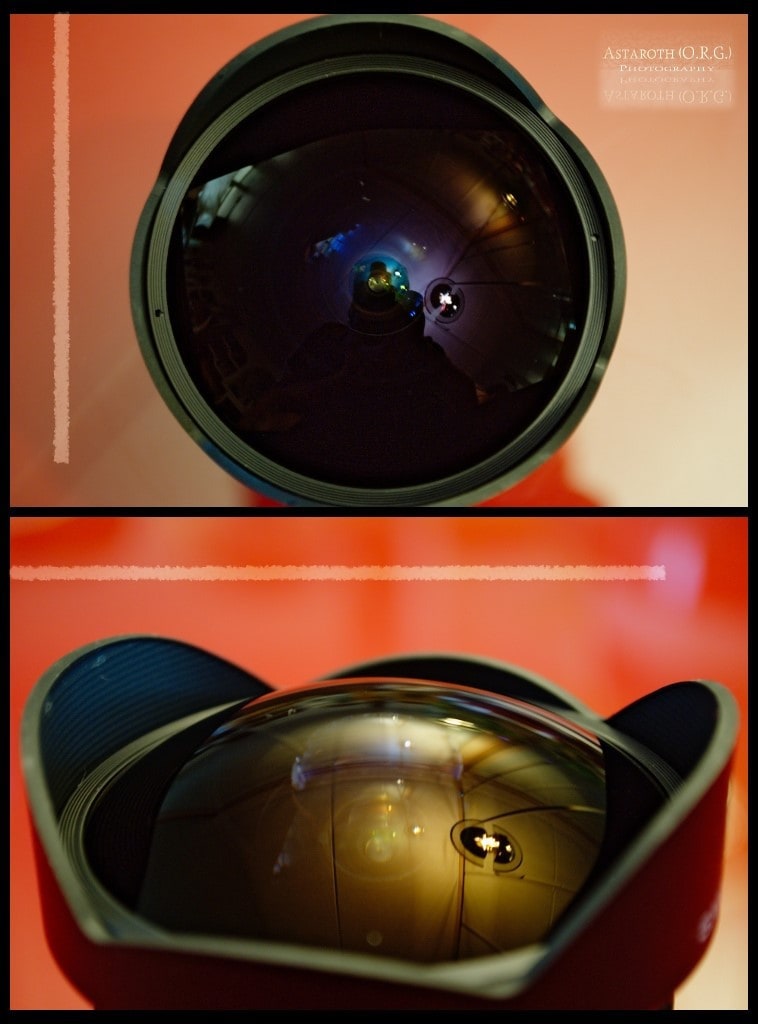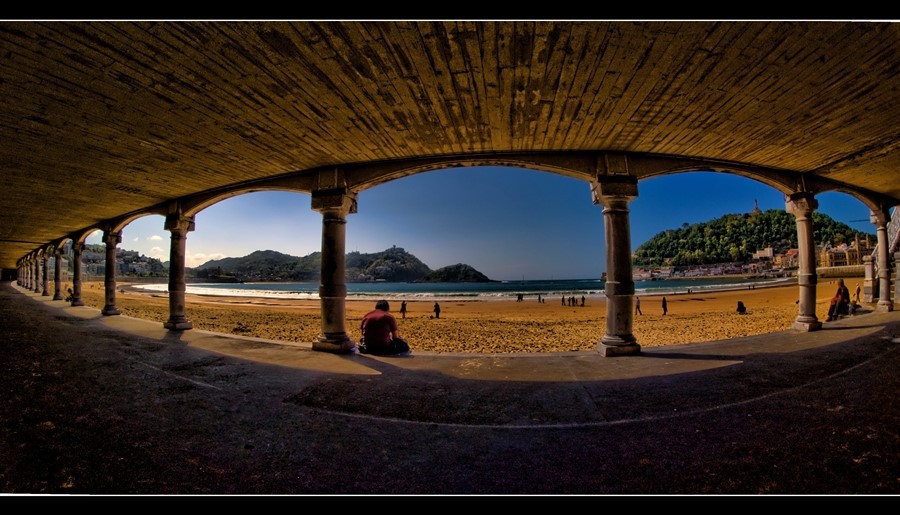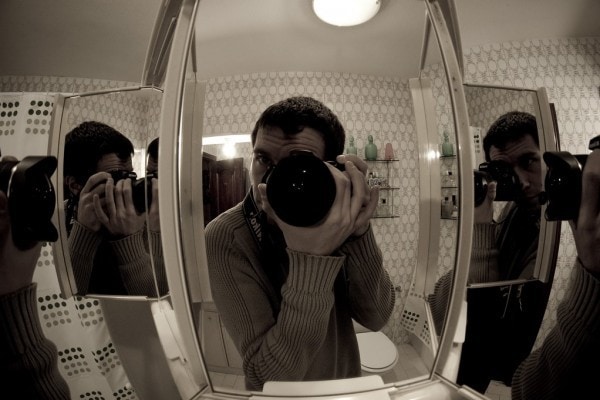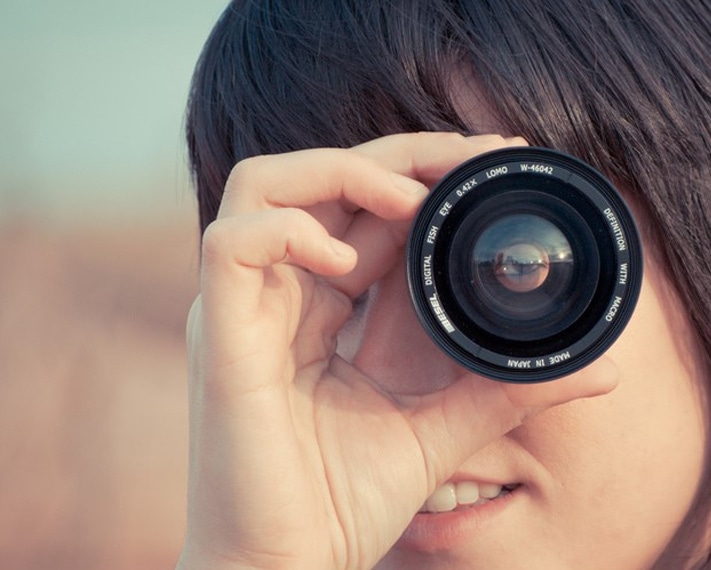There are as many ways to photograph the world as there are photographers who inhabit it, but when it comes to choosing a lens to do so, the options are not so varied. From telephoto lenses to capture what is far away, to angular ones to portray large portions of reality, there are not so many options available when it comes to immortalizing the reality that surrounds you.
But, not all lenses capture reality at the same time, there is a type of lens that distorts it: the fisheye.
Fisheye lenses break the norm and the photographs taken with them surprise and captivate the viewer, transporting them to a world where nothing is as it seems.
In today's article you will learn everything you need to know about this very peculiar type of objectives so that you can go out and portray reality as you have never done before.
FISHEYE LENS: WHAT IS THAT?
A fisheye lens is an extremely wide lens, so wide that it will allow you to cover a 180 degree angle of view. This means that if you use one of these lenses, almost nothing will be left out of the frame in your photos. This is possible thanks to its minimum focal length: between 8 and 16 mm and the shape of its front lens.
But is that a lot of 180 degree vision? If you take into account that the human eye has a field of vision of approximately 180 degrees, the answer is yes. In fact, you will find it impossible to get a lens for your camera that exceeds such viewing angles. That is why photographs taken with a wide angle are so particular and striking.
The main characteristic of this type of lens is the distortion that it produces throughout the entire scene: straight lines will become curved and such distortion will increase as they move away from the center of the image. This distortion is what differentiates them from a super wide angle, since, since they are not "fisheye" they do not distort the lines so exaggeratedly.

Focal distance, angle of view, depth of field are some of the concepts that you will need to know in order to fully understand the entire article, which is why, if you have no idea what they mean, I recommend that you read the following articles: “ Todo Lo What You Need to Know About the Focal Length of Your Lens ” and “ How to Capture Great Compositions Thanks to the Focal Length of Your Lens ”.
If you know them or have already read them, get ready to enter the world of fisheye lenses.
Advantages
- Allows you to take pictures out of the ordinary.
- If it is well managed, its effect can be truly amazing.
- Great depth of field.
- Extreme viewing angle (180 degrees) thanks to its extremely short focal length (8 to 15 mm)
- They allow an extreme sensation of place, that is, being inside the photograph.
Disadvantages
- These types of objectives do not usually come stabilized.
- Nor do they usually have a focus motor, at least the cheapest ones.
- Its effect is so particular that its use is too specific or limited.
- Although its distortion may be the advantage for which you are inclined to buy it, it may also be the cause for which you end up stopping using it.
- Composing with this type of lens is much more complicated due to the large number of elements that fit within its frame.

OPTIMAL APPLICATIONS
Although these types of objectives can be used in almost any situation, their use will not be optimal in all of them. That is why I could tell you that its use is more of the "creative" type, that is, it will depend on your creative capacity.
So when should it be used?
Like what happens with wide angle lenses, “fisheye” lenses maximize their potential in two types of photography: interiors and landscapes, after all, a fisheye lens is nothing more than a wide angle extreme that does not have any internal element (glass) that compensates for distortions.
1- Architecture, Interiors and exteriors: the angle of view of these objectives will allow you to capture almost the entirety of, for example, a room in a single shot. Have you tried photographing an environment? If you have done it without a wide-angle or fisheye lens, surely much of it has not "entered" in your photography. It is in this type of situation, in which an entire interior is required to be reflected in a single photograph, where fisheye lenses gain prominence over the rest.

2 – Landscapes: in this type of photography in particular, the use of a fisheye can also give you a lot of satisfaction, as long as you manage to control the distortions that are generated. Keep in mind that any line, including the horizon, will be distorted as it approaches the edges of the frame. Take advantage of all the elements present in the scene such as trees, rivers, the horizon, geometric patterns, etc. in order to attract the viewer's attention. In landscape photography, the fisheye effect will not be as noticeable as if you use it in situations where subjects are closer to the foreground.

Although these situations that I have just mentioned are the optimal ones for the use of a fisheye lens, this does not mean that it will be enough for you to place it on your camera and shoot to achieve amazing photos. Due to the great distortion they generate, you should choose the appropriate position in order to obtain the best results.
Nor does it mean that you cannot use it in other situations, remember that the limit of an objective is given by your ability to take it to the limit hand in hand with your creativity. The fate of your photos is always in your hands.
BRANDS AND PRICES
These types of lenses, despite not being an essential in every photographer's backpack, are an excellent option for you to achieve impressive photographs. The question is are they available for all cameras? They are very expensive?
I have prepared a list of 10 “fisheye” objectives for you to take into account:
The list that I have just shown you is only so that you can get an idea of the range of prices and variety of objectives that are available for the main brands. In any case, there are many objectives that I have not listed and that are surely worth considering. Also, there are converters that will not allow you to achieve the sharpness that you can get with a stand-alone lens, but they will allow you to take pictures with the fisheye effect.
Do you want to know which of the fisheye lenses you just saw I recommend? Take a look at the following article and you will know: “ Second Brands? No… 13 Primera Objectives! ”.
HOW TO GET THE MOST OUT OF IT?
- Keep in mind that the closer to the center the subject of your photographs is, the less distortion it will suffer. Keep this in mind when composing your photos and when deciding how to give prominence to your subjects . Work well with your close-ups and take advantage of the fact that the background will be very distorted.
- If you want to minimize the distortion of a line present in your frame, such as the horizon in a landscape, try to place it in the middle of the frame. The only lines that appear "straight" using a fisheye lens, is if you place them in the center, the rest of these will appear distorted and even more, as you move away from the center.
- The more you move away from your motives, the greater the distortion of these will be. If you want to enhance this effect, try moving a few steps away so that you increase the circular distortion around the center of the lens. Why do I say circular? Because the fisheye lens creates images around the center, giving a sensation of circularity.
- On the contrary, if what you want is to reduce the effect, what you should do is get closer to your subjects, in this way, the fisheye will work more like a wide angle lens. If you want to photograph a subject and make it as undistorted as possible, get closer to it and place it in the center of the scene.

Below you will find many examples of the tricks that I have just mentioned in order to get the most out of your fisheye lens.
8 TIPS AND TRICKS TO PORTRAY THE WORLD FROM A FISH'S EYE
Fisheye lenses are really difficult to handle, or rather, they are easy to use but it is not easy to get the best results. Thanks to its exaggerated angle of vision, its infinite depth of field and the distortions they generate, managing to compose a photograph will be quite a challenge.
Anyway, don't worry, with a little care and reading the following tips and tricks, you will have no problem doing it.
1. Work on your backgrounds: remember that the depth of field of this type of lens is very large, that is, almost all the elements present in the scene, whether in the foreground or in the furthest away, will be in focus. This is why you cannot stop working on the backgrounds in each of your photographs, and even less if you take them with a wide angle.

2. Check everything in the frame – With such a wide angle of view, it's possible that if you don't take the time to check everything before the shot, you may include elements that you didn't want beforehand or one that if you wanted it to pop out, it ended up being cut off or too distorted (too close to the edges). It is easy that, for example, your feet or part of the tripod will jump if you do not.

3. The center minimizes distortion: As I mentioned before, if you want to minimize the fisheye effect on a certain subject, the best way to do it is to get closer to it and take the picture from a slightly elevated angle. This will keep your subject as centered in the frame as possible, minimizing foreground distortion.

4. Play with the lines: encourage yourself to work on the lines present in the scene in order to enhance the distortion while guiding the viewer's gaze throughout your photographs. The further they are from the center, the lines tend to curve more, and the closer to the center, the less.

5. Use it for portraits: While I don't recommend taking very formal portraits with this type of lens, feel completely free to do it in any other situation where you want to shoot one of your models. The results you will get will be surprising and very strange.

6. Change the perspective: Shooting looking up with another type of lens can be a bit boring, but if you put a fisheye lens in front of your camera, the results will amaze you. The buildings will close in front of the spectator, like the trees and everything that you put in front of them or rather, above.

7. Take care of the horizon: Unless you want to get a completely distorted landscape, I recommend that if you include the horizon (or horizontal midline) in your photos, you place it in the midline of the frame. In this way, the horizon will appear straight while everything that is above or below it will not.

8. Indoors, don't even doubt it: the results you can get if you use a fisheye lens to take pictures indoors will be spectacular. Given the proximity of all the elements to the camera, the effect that gives this lens its name will be enhanced, so all that remains is for you to choose a good location and thus be able to achieve impressive photographs.

AND WHAT EFFECT IS OBTAINED WHEN RECORDING VIDEOS?
If a picture is worth a thousand words, a video can save me thousands. That is why I leave you with a video below so that you can appreciate, with your own eyes, what video recording is like when using a fisheye lens (in this case, a 15mm focal length Nikkor lens):
The range of possibilities that you can achieve thanks to a fisheye lens is very varied, you just have to know how to work with it.


